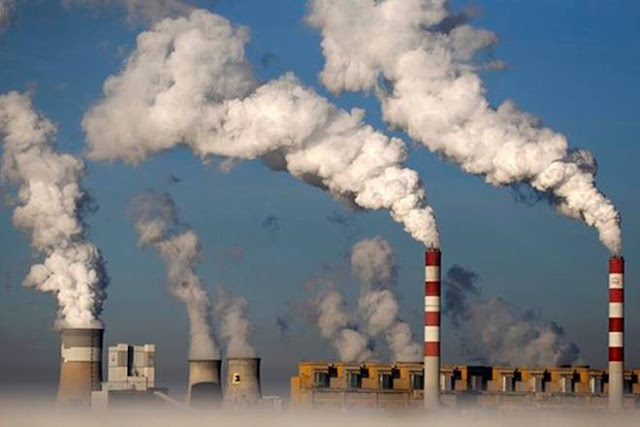Join Our Groups
Notes A
TOPIC 2 - CLIMATE AND NATURAL REGIONS
TOPIC 3 - HUMAN POPULATION
TOPIC 4 - SETTLEMENT
TOPIC 5 - ENVIRONMENTAL ISSUES AND MANAGEMENT
AMAZING GEOGRAPHICAL PLACES IN AFRICA - PART
4
10.
Congo River
Coursing
through the heart of Africa, the Congo is the continent’s second
longest river, after the Nile. It is contained primarily in, or marks the
border of, the Democratic Republic of the Congo. The river is
approximately 2,900 miles (4,700 km) long and, with its many tributaries, forms
the largest network of navigable waterways in Africa; this is in spite of the
difficulty in navigating the lower course of the river, which has 32 cataracts
(waterfalls). The Congo River is home to hundreds of species of fish, many of
which are endemic to the river. There are few aquatic mammals in the river, but
various types of reptiles, such as crocodiles, semiaquatic tortoises, and water
snakes, reside there.
11.
Serengeti National Park
The Serengeti
Plain, located in north-central Tanzania, (Africa) is world renowned as an
ideal location for wildlife and nature photography. Much of the beauty is
attributed to its sweeping vistas and dramatic natural features that extend over
60,000 square kilometers. The Serengeti has more than 2
million herbivores and thousands of predators.
Blue Wildebeests, gazelles, zebras and buffalos are
the animals most commonly found in the region.
A
significant portion of the Serengeti Plain is protected and preserved from the
ravages of modern society in the Serengeti National Park. This park, which
extends for roughly 12,950 square kilometers, contains a diverse selection of
habitats and wildlife. For the sake of comparison, the Serengeti National Park
is approximately the size of Northern Ireland. The Serengeti National Park
is bordered by Lake Victoria in the west, Lake Eyasi in the south,
and the Great Rift Valley to the east.
12.
Sahara Desert
The
Sahara is the world’s largest hot desert and the third largest desert
overall, surpassed only by the cold deserts of Antarctica and the Arctic. It
spans an expansive area of over 9 million square kilometers (approximately
3,500,000 square miles), roughly equivalent to the size of the United States or
China. The Sahara extends across 11 North African countries and covers more
than 30% of the African continent.
Recognized
as one of the world’s hottest deserts and one of the most extreme environments
on Earth, the Sahara has an average annual temperature of about 30°C (86°F),
with some areas experiencing extremes of above 50°C (122°F). The region is
characterized by low rainfall, with half of the Sahara receiving less than one
inch (2.5 cm) of rain annually.
BENEFITS OF PLANTING TREES - PART 4
13.
Our communities
Trees
can bring people together. They can act as a landmark within a neighbourhood
and encourage pride amongst people within that community. Trees and woodland
areas can be used to bring people together for educational purposes. They also
allow for activities such as walking or birdwatching. In addition, they give
children somewhere to play in and feel a sense of adventure.
14.
Soil protection and restoration
Healthy
soil is the foundation for sustainable agriculture and thriving ecosystems.
Reforestation helps protect and restore soil health by preventing erosion and
improving its structure. The extensive root systems of trees bind the soil,
reducing the risk of landslides and soil degradation.
As
trees shed leaves and organic matter, they enrich the soil with nutrients,
promoting fertility and supporting plant growth. Moreover, tree canopies shield
the ground from heavy rainfall and harsh weather.
15.
Property Value & Economic Value
Individual
trees and shrubs have value and contribute to savings, but it is the collective
influence of a well-maintained landscape that makes a real economic impact and
has the greatest effect on property value. Direct economic benefits come from a
savings in energy costs. Cooling costs are reduced in a tree-shaded home, and
heating costs lowered when a tree serves as a windbreak. According to the USDA
Forest Service, “Trees properly placed around buildings can reduce air
conditioning needs by 30% and save 20-50 percent in energy used for heating.”
16.
Natural Air Conditioning
Did you know that strategically placed trees around your home can significantly cut air conditioning needs? Not only will this make your wallet thicker, but it will also reduce carbon dioxide and emissions from power plants. Architects and environmentalists sat together and came up with the great solution – green roofs. Green roofs are an amazing way to incorporate vegetation to your home and provide environmental benefits for your community while saving money on cooling bills.






The notes are so fantastic and helpful
ReplyDeleteThanks
Delete
ReplyDeletegood work
Thanks
DeleteSo fantastic
ReplyDeleteThanks
Deletegreat notes
ReplyDeletesounds well and understandable notes summarised love it
DeleteThanks
DeleteThanks so helpful
ReplyDeleteSo summarized and helpful
ReplyDeleteGreat work
ReplyDeleteGood one
ReplyDelete